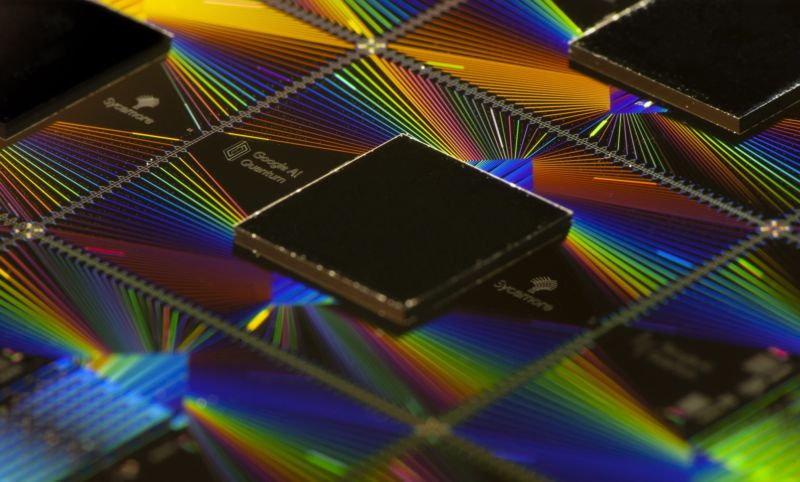
Enlarge / Google’s Sycamore processor. (credit: Google)
The current generation of quantum hardware has been termed “NISQ”: noisy, intermediate-scale quantum processors. “Intermediate-scale” refers to a qubit count that is typically in the dozens, while “noisy” references the fact that current qubits frequently produce errors. These errors can be caused by problems setting or reading the qubits or by the qubit losing its state during calculations.
Long-term, however, most experts expect that some form of error correction will be essential. Most of the error-correction schemes involve distributing a qubit’s logical information across several qubits and using additional qubits to track that information in order to identify and correct errors.
Back when we visited the folks from Google’s quantum computing group, they mentioned that the layout of their processor was chosen because it simplifies implementing error correction. Now, the team is running two different error-correction schemes on the processor. The results show that error correction clearly works, but we’ll need a lot more qubits and a lower inherent error rate before correction is useful.





